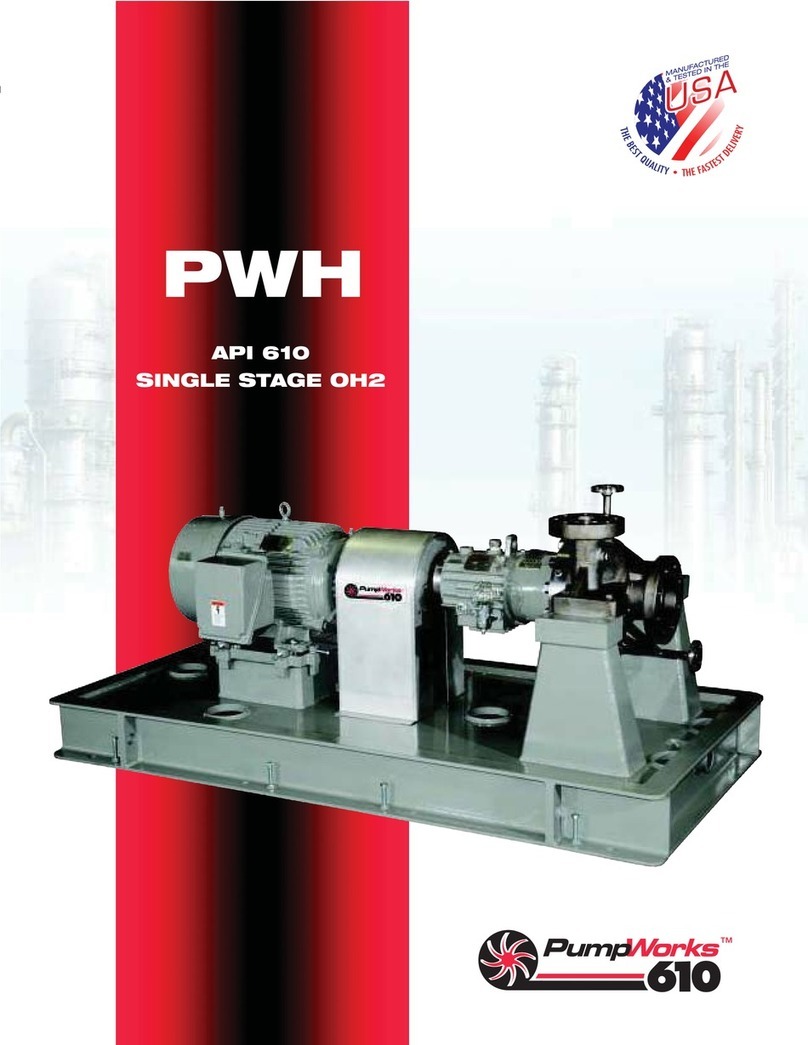
Model: PWD Rev. B_12/2/2015
Equipment Directive (PED) and Equipment for
Potentially Explosive Atmospheres (ATEX).
Where applicable the Directives and any
additional Approvals cover important safety
aspects relating to machinery and equipment
and the satisfactory provision of technical
documents and safety instructions. Where
applicable this document incorporates
information relevant to these Directives and
Approvals. To confirm the approvals applying
and if the product is CE marked, check the serial
number plate markings and the Certification, see
section 9, Certification.
DISCLAIMER
Information in these User Instructions is
believed reliable. In spite of all the efforts of
PumpWorks 610 to provide sound and all
necessary information, the content of this
manual may appear insufficient and is not
guaranteed by PumpWorks 610 as to its
completeness or accuracy.
PumpWorks 610 manufactures products to
International Standards Organization as certified
and audited by external Quality Assurance
organizations. Genuine parts and accessories
have been designed, tested and incorporated
into the products to help ensure their continued
product quality and performance while in use. As
PumpWorks 610 cannot test parts and
accessories sourced from other vendors the
incorrect incorporation of such parts and
accessories may adversely affect the
performance and safety features of the
products. The failure to properly select, install or
use authorized PumpWorks 610 parts and
accessories is considered misuse. Damage or
failure caused by misuse is not covered by
PumpWorks 610’s warranty. In addition, any
modification of PumpWorks 610 products or
removal of original components may impair the
safety of these products in their use.
COPYWRIGHT
All rights reserved. No part of these
instructions may be reproduced, stored in a
retrieval system or transmitted in any form or by
any means without prior permission of
PumpWorks 610.
DESIGN PERFORMANCE
The PWD pump is specifically designed to
meet performance conditions based on service,
operating speed, specific gravity, viscosity, and
NPSHA. Materials of construction and running
clearances are based on those conditions.
PumpWorks 610 Engineering Department
should be consulted prior to changes in product
or operating conditions beyond that of which this
unit was specifically designed.
DUTY CONDITIONS
This product has been selected to meet the
specifications of your purchase order. The
acknowledgement of these conditions has been
sent separately to the Purchaser. A copy should
be kept with these instructions.
The product in no way should be
operated beyond the parameters specified
for the application. If there is any doubt as to
the suitability of the product for the
application intended, contact PumpWorks
610 for advice, referencing the serial number.
If the conditions of service on your purchase
order are going to be changed, (for example
liquid pumped, temperature or duty) it is
requested that the user seeks PumpWorks
610’s written agreement before startup.




























